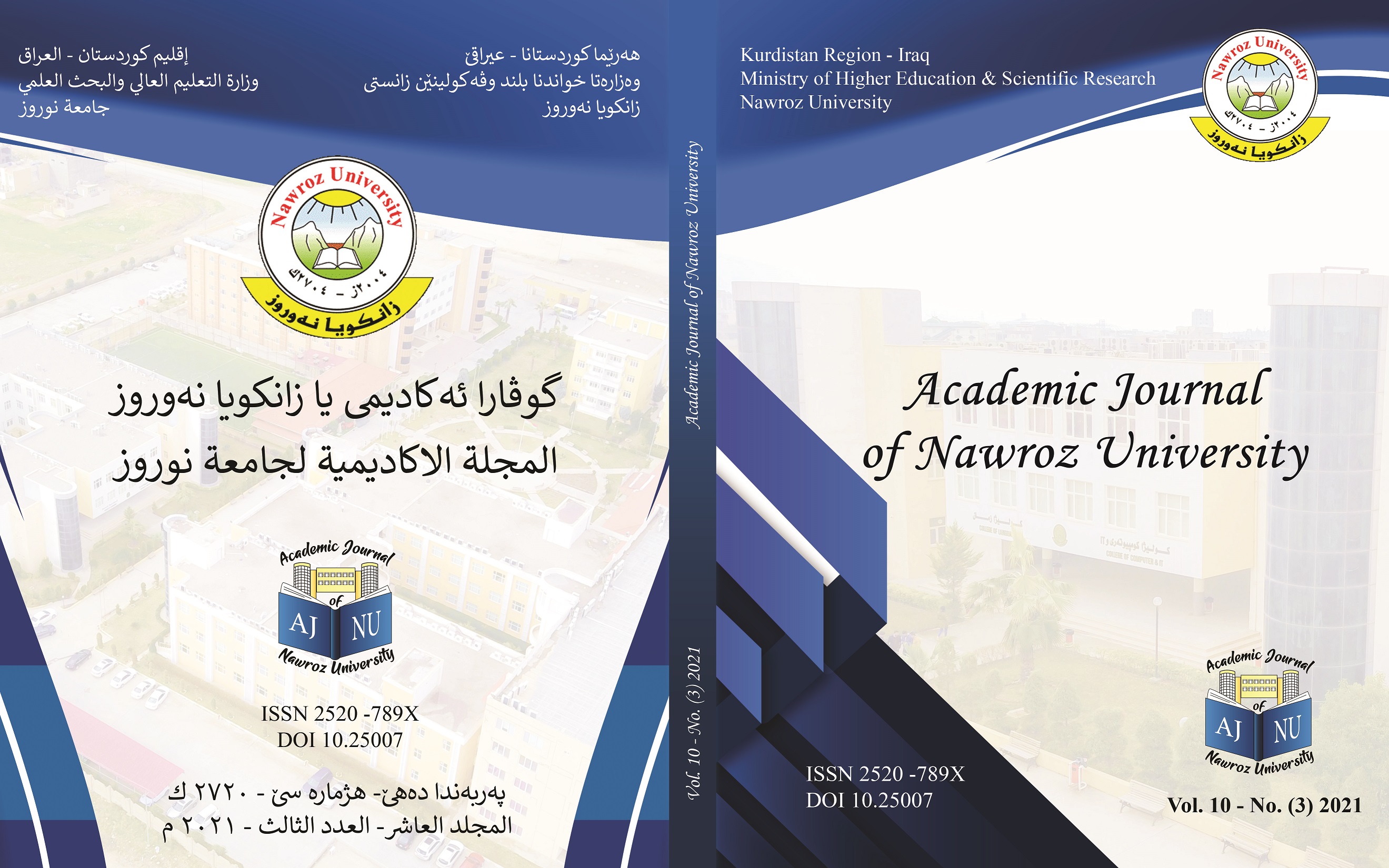Diagnosing the behavioral economics pricks in people's choices An exploratory study of the opinions of a sample of professors and students in the Department of Economics in the College of Administration and Economics
DOI:
https://doi.org/10.25007/ajnu.v10n3a1232Abstract
Behavioral economics is one of the modern tools of economics that combined changing psychology with abstract economic hypotheses, which contributed to explaining many of the irrational behaviors of individuals that traditional economics failed to explain, as well as changing their choices without coercion, and this method is called libertarian paternalism. ), as behavioral economics depends in its work on hidden influences that mimic the psychological and irrational side of individuals and then lead to affecting their behavior, and these influences are called “pricks”, and in this research we investigated the effectiveness of several types of pricks in changing the behavior of individuals. The researcher used the questionnaire method to know the way the poke works and its effects on the decisions of individuals, and it was found from the research that the impact of these pokes is great and effective in changing the decisions of individuals, as well as the possibility of benefiting from them in formulating economic policies by adopting and integrating them in many economic fields to help achieve a better life society without restricting the freedom of individuals.
Downloads
References
Laibson, David, and John A. list, Principles of (Behavioral) Economics.”, American Economic Review 105 (5) (May), 2015
Wilkinson, Nick and Matthias Klaes, An Introduction to Behavioral Economics, 2nd edition, Palgrave Macmillan, uk, 2012
Thaler, Richard H. and Cass R. Sunstein, NUDGE Improving Decisions About Health, Wealth, and Happiness, Yale University Press New Haven & London, 2008
Ariely, Dan, predictably irrational, Harper Collins Publishers, New York, 2008.
Kahneman, Daniel, and Amos Tversky, “Prospect Theory: An Analysis of Decision under Risk.” Econometrica 47 (2), 1979.
Thaler, Richard H. “Toward a Positive Theory of Consumer Choice.” Journal of Economic Behavior and Organization 1 (1): 1980.
Uoto, Jill and Katherine Carmen, behavioral economic guidelines with application for health interventions, inter-american development bank, 2014.
Halpern D., inside the nudge unit: how small changes can make a big difference, random house, 2016.
Boven l, the ethics of nudge, preference change, springer, Dordrecht, 2009.
Gruber, Jonathan, and Botond Ko˝ szegi. “Is Addiction ‘Rational’? Theory and Evidence.” Quarterly Journal of Economics 116 (4), 2001.
Hossain, Tanjim, and John A. List. “The Behavioralist Visits the Factory: Increasing Productivity Using Simple Framing Manipulations, 2012.
Downloads
Published
How to Cite
Issue
Section
License
Copyright (c) 2021 Van Miran Shahin

This work is licensed under a Creative Commons Attribution-NonCommercial-NoDerivatives 4.0 International License.
Authors retain copyright
The use of a Creative Commons License enables authors/editors to retain copyright to their work. Publications can be reused and redistributed as long as the original author is correctly attributed.
- Copyright
- The researcher(s), whether a single or joint research paper, must sell and transfer to the publisher (the Academic Journal of Nawroz University) through all the duration of the publication which starts from the date of entering this Agreement into force, the exclusive rights of the research paper/article. These rights include the translation, reuse of papers/articles, transmit or distribute, or use the material or parts(s) contained therein to be published in scientific, academic, technical, professional journals or any other periodicals including any other works derived from them, all over the world, in English and Arabic, whether in print or in electronic edition of such journals and periodicals in all types of media or formats now or that may exist in the future. Rights also include giving license (or granting permission) to a third party to use the materials and any other works derived from them and publish them in such journals and periodicals all over the world. Transfer right under this Agreement includes the right to modify such materials to be used with computer systems and software, or to reproduce or publish it in e-formats and also to incorporate them into retrieval systems.
- Reproduction, reference, transmission, distribution or any other use of the content, or any parts of the subjects included in that content in any manner permitted by this Agreement, must be accompanied by mentioning the source which is (the Academic Journal of Nawroz University) and the publisher in addition to the title of the article, the name of the author (or co-authors), journal’s name, volume or issue, publisher's copyright, and publication year.
- The Academic Journal of Nawroz University reserves all rights to publish research papers/articles issued under a “Creative Commons License (CC BY-NC-ND 4.0) which permits unrestricted use, distribution, and reproduction of the paper/article by any means, provided that the original work is correctly cited.
- Reservation of Rights
The researcher(s) preserves all intellectual property rights (except for the one transferred to the publisher under this Agreement).
- Researcher’s guarantee
The researcher(s) hereby guarantees that the content of the paper/article is original. It has been submitted only to the Academic Journal of Nawroz University and has not been previously published by any other party.
In the event that the paper/article is written jointly with other researchers, the researcher guarantees that he/she has informed the other co-authors about the terms of this agreement, as well as obtaining their signature or written permission to sign on their behalf.
The author further guarantees:
- The research paper/article does not contain any defamatory statements or illegal comments.
- The research paper/article does not violate other's rights (including but not limited to copyright, patent, and trademark rights).
This research paper/article does not contain any facts or instructions that could cause damages or harm to others, and publishing it does not lead to disclosure of any confidential information.





